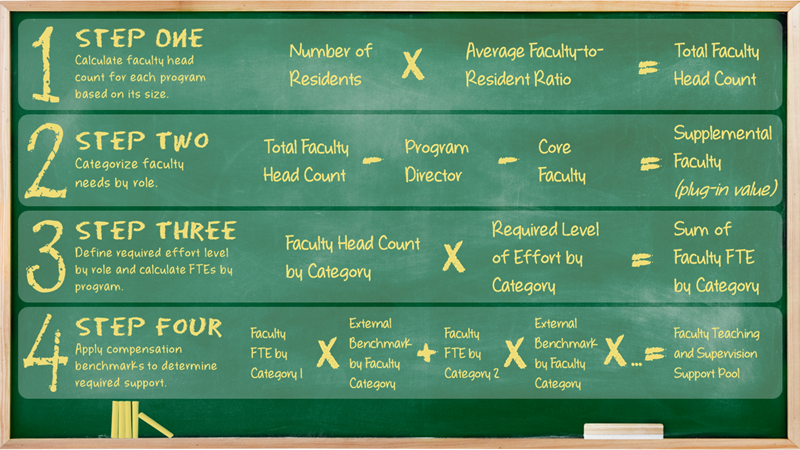
Faculty-related expenses account for more than one-third of all graduate medical education (GME) costs. So it’s surprising that many teaching hospitals and academic medical centers don’t have an objective, data-driven methodology for determining the appropriate funding for the faculty pool.
Leading, forward-thinking teaching hospitals and medical schools are turning to contemporary frameworks to determine the needed level of support for each residency and fellowship program and ensure GME spending is aligned with the organization’s strategic goals.
GME Faculty Funding Framework: Key Characteristics
Best practices for developing a funding methodology include the following key principles:
- Be Clear and Transparent: The faculty funding framework should be consistent, easily understood, and transparent. The approach must provide predictability and allow GME and program administrators to easily manage the financial operation of each program.
- Reflect Published Requirements: The ACGME establishes specific hourly supervision and teaching requirements for each type of faculty effort (e.g., program director, associate program director, core faculty), which vary by program. Top-performing organizations utilize models that take into account ACGME specialty-specific requirements and the size of the program. This ensures the level of financial support is aligned with each program’s faculty needs.
Recommended Framework
To determine the appropriate level of faculty salary support for GME programs, we recommend using a formulaic, benchmark-based approach, as shown in figure 1.

Every GME program must maintain a roster of faculty, the size and composition of which is largely dependent on the resident head count and requirements promulgated by the ACGME. To calculate the total number of faculty needed, multiply the number of residents in the program by the annually published benchmarks that provide specialty-specific average faculty-to-resident ratios.[1]
In addition to the required leaders and core faculty, programs are often supported by subspecialists and other supplemental faculty. These physicians provide supervision on select rotations or lead specific didactic lectures. The decision about how to compensate supplemental faculty efforts varies across organizations; however, to fully account for all faculty-related expenses when developing GME budgets, we recommend including supplemental faculty in the funding framework.
Most ACGME Review Committees have established dedicated time requirements for each type of faculty member to support educational and administrative responsibilities not involving direct patient care. The time requirement varies by specialty. To determine the required faculty FTE for the program, the number of faculty calculated in step one is multiplied by the required dedicated time for each faculty category. The calculated FTEs are then multiplied by the organization’s standard compensation benchmarks by physician level to determine the total faculty pool funding for each program. Programs requiring significant involvement from subspecialty physicians (e.g., internal medicine) should have faculty pool funding that appropriately reflects this need.
Bottom Line
GME often represents a strategic investment for teaching hospitals and their academic partners. Given recent changes to accreditation requirements, an increasing focus on physician well-being, and the perpetual need to instruct the next generation of physicians, teaching institutions must appropriately fund the clinical educators who supervise and train residents and fellows.
A clear, consistent, and predictable approach for funding GME faculty efforts is needed to ensure programs receive adequate financial support, incentivize physicians to devote time to educating learners, and provide transparency for leadership regarding the financial commitments these programs entail.
How does your GME spending align with your organization’s strategic goals?
Our experts can provide an objective, data-driven methodology for determining the appropriate funding for your faculty pool.
Footnotes
1. Faculty-to-resident ratio benchmarks are published by the American Medical Association in its Fellowship and Residency Electronic Interactive Database Access system.



